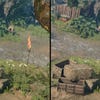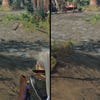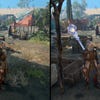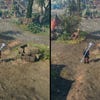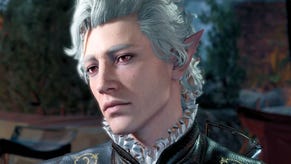Baldur's Gate 3 on PS5 is effectively the PC version at ultra settings
And yes, we've tested Act Three too.
Baldur's Gate 3 is one of the most highly acclaimed games of the year, marrying the best of video games with the complexity and nuance of a Dungeons and Dragons campaign. It's unashamedly a PC-centric title, with a dense interface and controls best suited for a computer keyboard so it's not totally clear how well the game will fare on PS5. Adding to potential controller quirks, the PC build has rather problematic performance in a handful of areas later in the game, which threaten to disrupt the PS5 and its relatively meagre CPU. Happily, PlayStation 5 manages to deliver a creditable rendition of the game, but the now legendary Act Three continues to humble CPU performance - perhaps more than we anticipated going in.
Baldur's Gate 3 has been available on PC for about a month now and most of the findings from that version apply equally to the PS5 release. It's definitely a good-looking game, though not a boundary-pushing one - its visual best suited to the elevated camera angle. Up close, you see the limitations of Larian's proprietary engine tech, with lighting and model detail that doesn't always survive close scrutiny, but it looks perfectly fine most of the time, especially in naturally-grounded outdoor scenes.
That also mostly applies to the game's control options. Baldur's Gate 3 is probably best enjoyed with a mouse and keyboard on its original host platform but also supports gamepad controls on both PS5 and PC. At the beginning of the game this works mostly fine, with various radial menus and trigger-based toggles serving up the full range of gameplay options. Unfortunately this does seem to become a bit cumbersome as you progress, as the full range of possible abilities slightly overwhelm the interface.
This isn't a big issue for playability as Baldur's Gate 3 is a strictly turn-based affair during combat, but I did find it somewhat cumbersome for traversal on PS5. For those players who would prefer the traditional PC keyboard and mouse setup on console, those controls haven't survived the porting process, which is a bit of a shame.
From a visual perspective, the PS5 version mostly acquits itself quite well in terms of basic graphical features. It doesn't seem to really be lacking anything at first glance, and that's for good reason: it actually appears to be running at the PC's ultra settings preset, which is the highest set of options available. This isn't typical of most console games, but the performance delta on PC between the various settings options is minimal, so the high visual target does make some sense here.
That said, Alex's optimised settings offer a circa 20 percent performance win over the maximum options with very little visual difference, so it's surprising that the developers haven't opted to scale things back a touch for the performance mode. Relative to those optimised settings, the only thing that really stands out to my eyes is the depth of field, which benefits significantly from the denoise option that appears to be enabled on PS5, producing a cleaner overall image. The shadows are also improved, though that tends to be more subtle from most camera angles.
In terms of image quality, there are two options on display - a simple toggle to turn performance on or off, which effectively gives us a performance and quality mode. Both offer the same visual settings and both target 1440p according to the game, so does this hold up in practice? Pixel counts reveal that the quality mode does indeed clock in at a native 1440p. In every shot I tested I counted a straight 1440p without any signs of reconstruction or dynamic resolution. The performance mode looks a lot like the quality mode and resolves about as much detail in still shots, but it has some extra artifacting - namely, ghosting trails on foliage and some fizzing artifacts in some areas on fine detail - that suggest a certain upsampling method is in use.
FSR 2's typical visual artifacts are in play here and Larian has suggested FSR 2 integration is planned for the PC release, so it makes the most sense as an upsampling solution on PS5. I believe the game is using FSR 2 to hit a 1440p output, upsampled from roughly a 960p internal resolution, which would correspond to FSR 2's quality mode. Again, there could be some dynamic resolution in effect, but if so it's not common. In actual gameplay the quality and performance modes look very similar, minor upscaling artefacts aside. I think both hold up perfectly well on a 4K television set from a typical viewing distance, though up close you will see a bit of softness in the image.
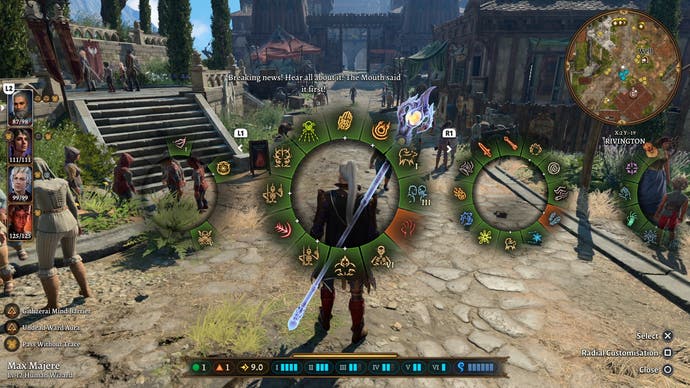
From a visual perspective, Baldur's Gate 3 is a pretty decent experience on PS5 hardware and frame-rates are good for much of the experience. Performance mode targets 60fps and for the most part it does seem to reach that target. Interior areas and most of the game's exterior landscapes run just fine at 60fps, including combat scenes. I did notice that certain cutscenes do seem to run beneath this target, but these moments are fleeting. The grove area in the first act also sees some little dips when you walk around - it's nothing too severe, but worth noting.
However, there are areas that don't fare quite as well. Inevitably, the city area from the game's third act is much, much heavier than the areas from the first act that we sampled, with performance dropping into the low twenties at worst. As far as I can tell, these issues probably shouldn't arise before this section, as the many, many hours of gameplay that precede it don't feature large, NPC-dense cities like this.
It's also worth noting the screen-tearing here. Baldur's Gate 3 has some tearing in roughly the top 20 percent of the screen during typical gameplay when the frame-rate is dropping below 60fps, on the order of a few frames every second or so. It's a little annoying to be sure, but it does preserve a bit of input response at the expense of hurting image quality. For a turn-based game I would probably have elected to just hold v-sync regardless, but this is a choice that developers sometimes make. In the heaviest scenes, there's also distracting tearing at the very bottom of the scene, which looks like a bug - as if the game is flipping in the next frame before it should be.
Baldur's Gate 3 also has a quality mode, aimed at improved consistency. The new frame-rate target here is 30fps and does an excellent job of hitting that figure. I couldn't provoke any issues in Act One at all, as the game proceeds at a locked 30fps regardless of what I throw at it. My only real complaint here is the complete lack of motion blur, which makes the 30fps update feel a bit choppier than it could.
Act Three still has issues though. In the noted trouble spots, frame-rates again drop to the mid-to-low 20s, with highly inconsistent animation. Other parts of the city also provoke drops, though not as severe. Larian has opted to retain v-sync here, unlike the performance mode, so there is no screen-tearing whatsoever even when the frame-rates are low.
Running the performance and quality mode frame-rate readouts back-to-back, I strongly suspect that the game is severely CPU-limited in the Act Three area, as Alex previously described for the PC version. There's virtually no difference in frame-rates, suggesting that there's a CPU bottleneck in both visual modes. It's interesting to note that in basically identical testing, the CPU limit of the PS5 is significantly lower than our prior tests on the PC version using a mainstream Ryzen 5 3600.
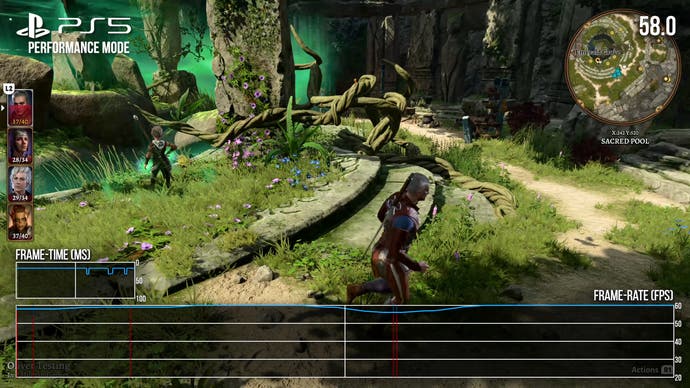
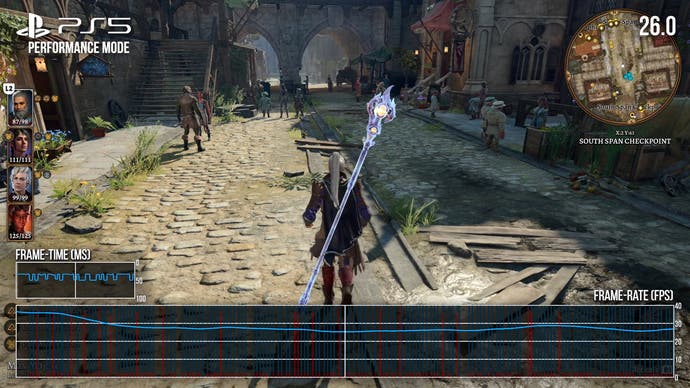
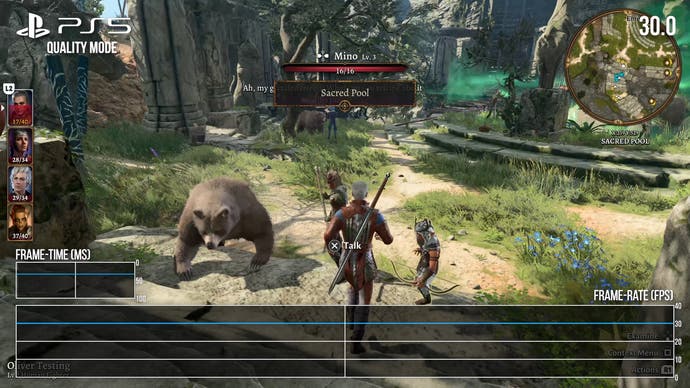

There is another way to play Baldur's Gate 3 and that's the game's split-screen gameplay mode. Here the game also renders at 1440p natively, just like in the quality mode. Technically this image is split in half vertically, giving each player an effective 1280x1440 resolution during gameplay. It does feel a bit cramped, but it mostly works fine. In terms of visual settings, split-screen does seem to come close to the ultra settings preset. I did spot noticeably reduced shadow quality in a few moments, though the difference was slight. It's possible that other settings take a hit too but if so, any cut-backs are minor.
I tried to break the split-screen mode by moving one character as far as possible from the other one while leaving the other character totally stationary, and for the most part there were no issues. I did notice that the shadows on my stationary character became progressively degraded the further I moved away as the branch details were pruned away, but everything else held up just fine.
In split-screen, the performance figures are largely the same as in the quality mode. That means a pretty stable 30fps during gameplay for the most part, outside of the somewhat calamitous city area in Act Three. In the most demanding section, we are again hovering around the low 20s. That means that split-screen players don't take any big performance compromise relative to single-player play, but I wouldn't say the game's performance is uniformly good here. I'm not sure that Baldur's Gate 3 is a particularly compelling split-screen experience, given its slow pace and single-player-oriented structure, but the PS5 does deliver a pretty decent implementation in this title, with minimal compromises relative to the standard experience.
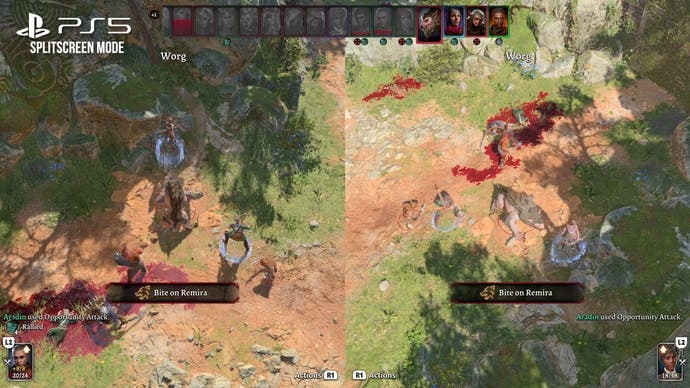
Wrapping up, Baldur's Gate 3 works on PS5. As long as you can get over any controller hangups, the game performs reasonably well on Sony's current-gen console, at least relative to what we see from mid-range PCs. However, while you'll be spending hours in this game with no performance problems whatsoever, the underlying issues found later in the game are still present on PlayStation 5.
Thankfully that isn't the case for the majority of the experience, as far as I can tell, and in more sedate areas the game runs with a reasonably consistent 60fps or a rock-solid 30fps, depending on the visual mode you select. Split-screen also arrives without substantial compromise, which is a welcome surprise given the issues the developers seem to have had translating a version of that mode to Series S.
For gamers without access to a high-end PC, the PS5 version of Baldur's Gate 3 delivers exactly what we expected from it, but we'd hope to see further optimisations for all platforms when it comes to the most challenging in-game content.



